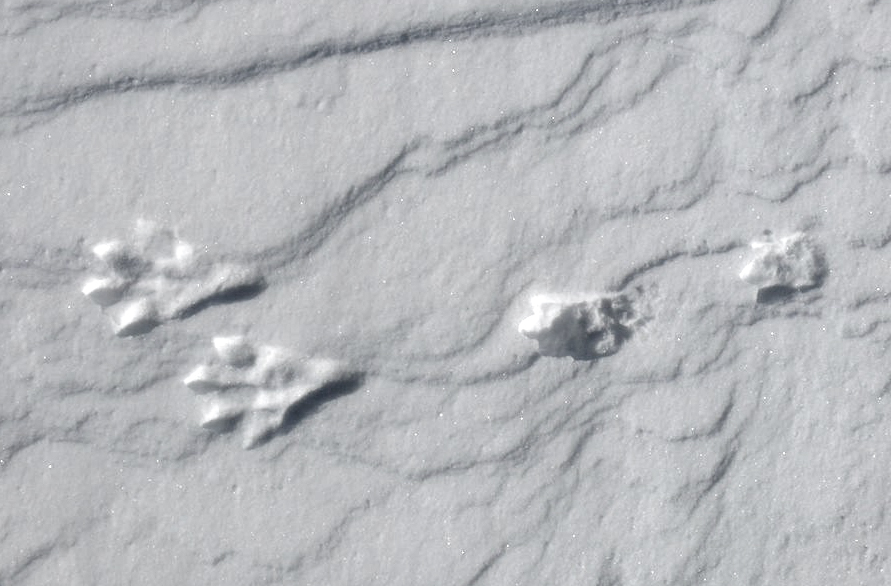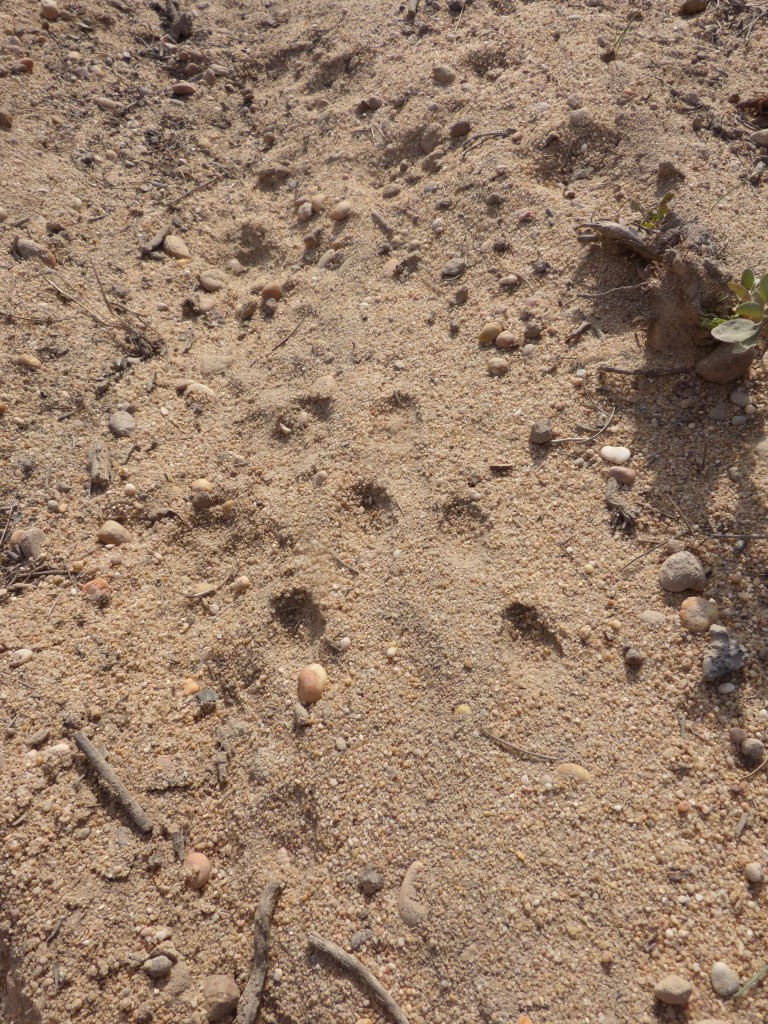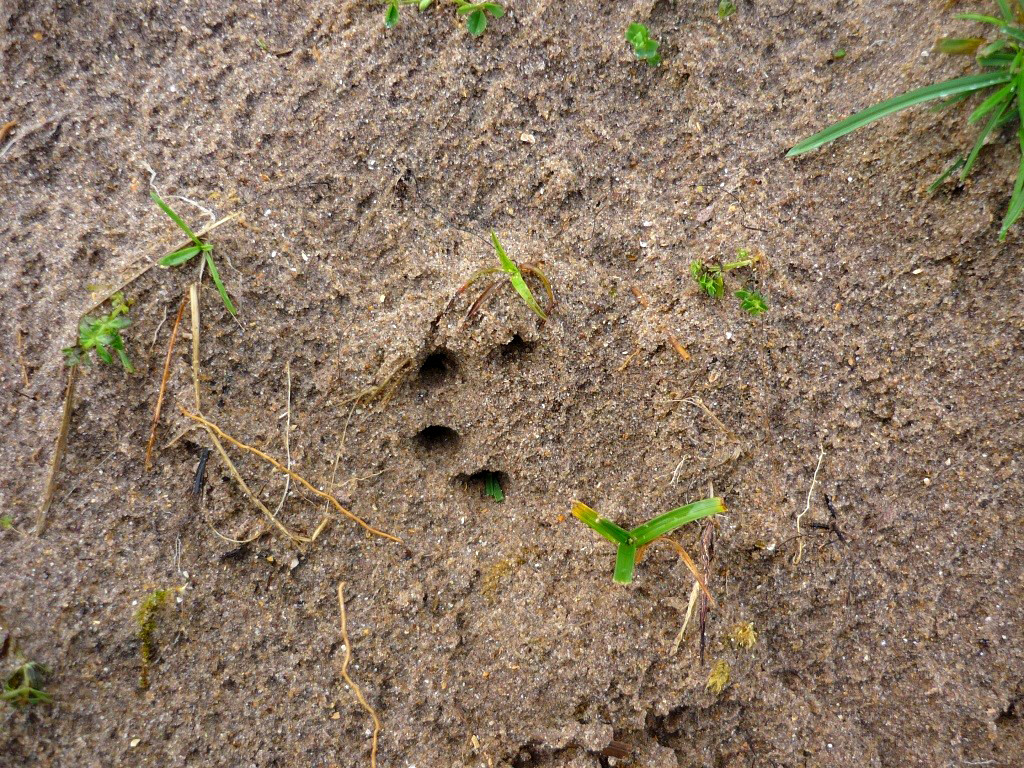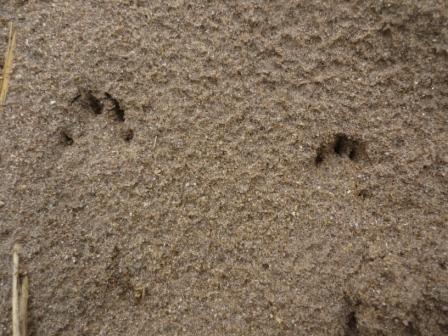By Sean Fagan.

Some wonderful tracks of the snowshoe hare (Lepus americanus). The rightmost tracks are the hare's fore feet and are arranged one in front of the other - this is a typical arrangement when the hare is moving fast and bounding. The leftmost tracks are the hares hind prints - and are usually arranged more or less side by side. The hare is moving from right to left in photo. As soon as the fore feet of a fast-moving hare land, the hind feet start to extend pass the fore feet - landing a good distance in front of the forefeet. Note how large and well-spread the hind prints are? This is an adaptation to spread the weight of the hare and prevent sinking into the snow - an important consideration when being chased by, for example, a lynx (lynx are fond of snowshoe hares - one of their main prey animals during the harsh months of winter), (Photo: Cian Fagan - Ontario, Canada).
.

Can you see the fore and rear prints of this slow moving Iberian hare (Lepus granatensis)? Clue: when hares move very slowly the hind feet may not land pass the forefeet (Photo: Sean Fagan - Portugal).
.

Rabbit track. It's relatively easy to recognize rabbit tracks - there is an absence of toe or heel pads - what is mostly left behind in the track is claws marks which are typically arranged in a semi-circle. The claws are short but sharp - enough to draw blood if necessary. Rabbits have been known to aggressively attack with their claws - in territorial disputes with other rabbits and when attacked by predators (Photo: Sean Fagan).

Another example of rabbit tracks - with the four short claws arranged in a semi-circle. The underside of rabbit feet are covered in a thick covering of spongy, forward-pointing hair which act as a substitute for toe and heel pads. Typically, the heel and toe pads in the tracks of most non-hoofed mammal species show in their tracks (Photo: Sean Fagan).

Recent Comments